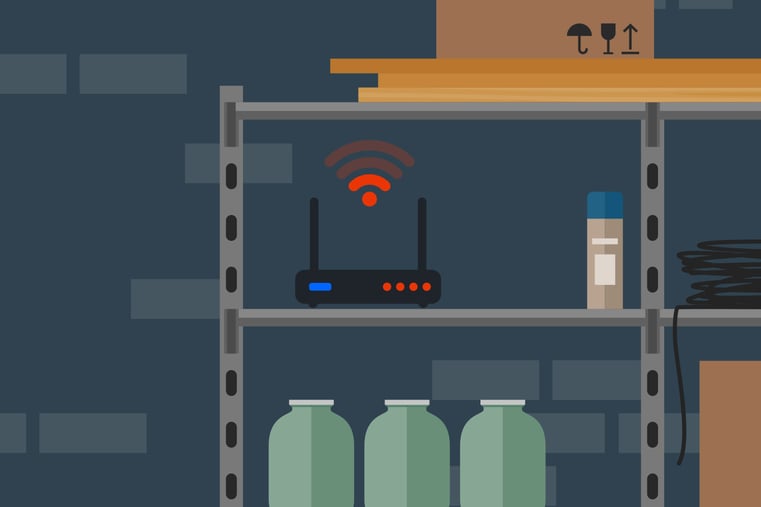Expectations versus reality: 4 ways WiFi installs don’t follow technician best practices

When it comes to WiFi installations, your technicians know what they’re doing—but even with their best efforts, sometimes things go sideways. And when that happens? Well, it’s not because of the techs; it’s often because subscribers don’t understand their networks.
Worse, they don’t understand how their own actions and decisions affect their networks—which means they object to best practices and actively prevent techs from being able to do their jobs effectively.
You might recognize a few (or all!) of these scenarios—where subscribers object, and a technician’s expectation for how an installation should go doesn’t quite align with reality.
1. Picking the right router location
Expectation: Naturally, when your technicians go out to install a subscriber’s WiFi network, they want to make sure that the subscriber has a good experience. The first step to that experience is ensuring that the router ends up in a central location, so the signal can reach every corner of the house.
Reality: Maybe the subscriber has another location in mind. Maybe they really don’t like the look of the router and don’t want it messing up their Instagram-worthy bookshelf. Or maybe they don’t know why, but just don’t want it there.
No matter the reason, this sort of protest prevents technicians from being able to properly set up the subscriber’s WiFi—which can quickly turn into issues later on like weak signal and dead spots.
What’s the fix? Today’s installation process means technicians have little other than their own word to convince subscribers that the location they chose is better than the basement. They need tools to help them show rather than tell, so subscribers can see the direct impact different locations have on their network.
2. Adding network extenders
Expectation: Your technicians know that the majority of modern homes need WiFi extenders to get the kind of coverage subscribers need. In fact, research shows that the average home with 1,500 sq. ft. needs at least two! And ideally, they’d be able to install these extenders with no issue.
Reality: Your subscribers aren’t network experts; they don’t understand these newfangled devices and often see them as an upsell ploy. So if your tech tries to install any, they’re met with complaints of not wanting to pay any extra — or even accusations of trying to pull a fast one on the subscriber.
This leaves technicians with little recourse but to pack up the pods and hit the road — only to return a few days later when the subscriber realizes they can’t connect in their home office.
What’s the fix? Much like the issue of router location, the problem here is that subscribers can’t visualize their home network and have to rely on the technician’s word. By giving technicians a tool that lets them map out a network and show the differences extenders can make, it’s much easier to win subscribers over.
3. Hardware is current
Expectation: The technician wants to ensure that your subscriber’s set-up is optimized to provide speeds that are closest to the package they signed up for.
Reality: While subscribers may be upgrading their internet speeds, they’re not always upgrading their hardware, making it difficult for them to achieve higher speeds. This leads the subscriber to believe that they were misled and that it’s the fault of their service provider.
What’s the fix? Equip your technicians with tools that showcase the WiFi coverage and internet speed in every corner of their house. Provide documentation of the entire set-up for future reference which adds greater value to the installation process for the subscriber and helps to avoid repeat tech visits.
4. Success on the first visit
Expectation: When your technician leaves a subscriber’s home, their goal is that the WiFi network works perfectly—so the subscriber has a good experience and so the tech doesn’t have to come back.
Reality: Techs end up having to return to the site much more frequently than they should because most subscribers don’t understand:
- How their networks were set up
- How their choices earlier on impacted their network
- Or why stuffing that less-than-aesthetic extender in a drawer as soon as the tech left was a bad idea
If subscribers can’t connect in one room of their home, they’ll call in to support—and rather than try to follow any troubleshooting instructions, they’ll often ask the support agent to just send the tech back.
What’s the fix? The right tools can help your technicians educate subscribers as to why their network has been set up in a specific way and provide a better understanding of how their actions can impact the performance of their WiFi connection. By providing this education upfront, it can dramatically reduce the number of repeat visits.
How can you turn techs’ expectations into reality?
Your technicians work hard, and they know what they need to do. In many cases, the issue isn’t their work; it’s that subscribers just don’t get it, and invisible networks are incredibly hard to explain to non-technical folks.
What technicians need is the ability to show, not tell. They need to be able to illustrate why a router location they pick is better; how adding a pod on the second floor means the subscriber can stay in a Zoom call; and even how moving devices around after the fact means the network itself will change.
